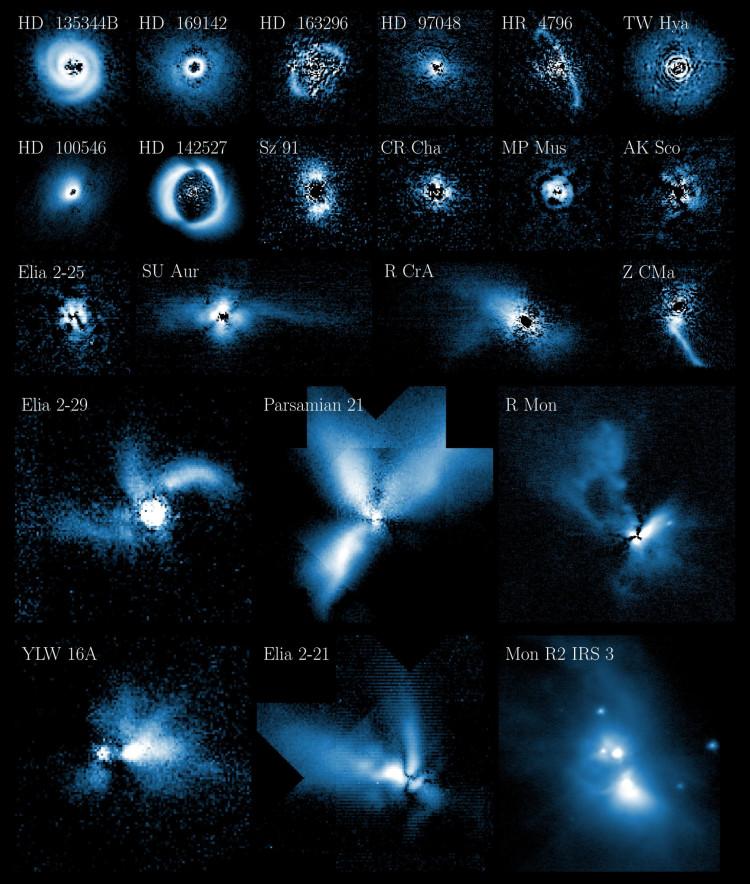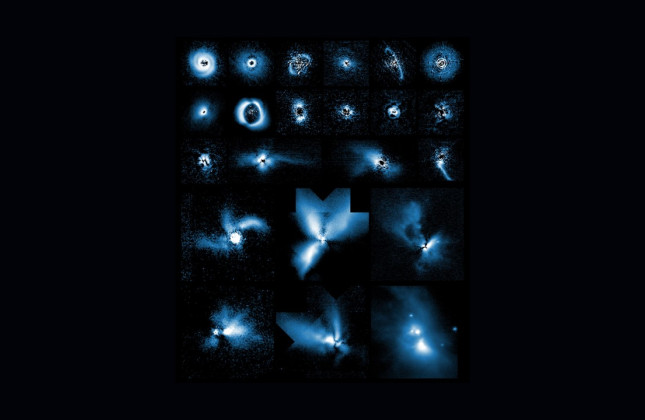When Sam de Regt (Leiden University, the Netherlands) attended lectures of Matthew Kenworthy (Leiden University) and Christian Ginski (now University of Galway, Ireland), he thought it would be interesting to research the so-called PDI method for his master's thesis. PDI stands for Polarimetric Differential Imaging. This method allows astronomers to distinguish between the extremely bright, unpolarised light from a star and the faint, polarised light reflected from dust particles located in a disk around the star. In such dust disks, planets can be formed.
Very Large Telescope
Ginski and Kenworthy suggested to De Regt to reanalyze archival images from the NACO instrument. That instrument was located on the Very Large Telescope in Chile from 2003 to 2019 and contains data from 57 young stars.
After cleaning up the images, De Regt saw dust disks around twenty known stars. To his surprise, in addition to those 20, two other stars were found to contain dust structures in these observations: YLW 16A and Elia 2-21. These protostars are located some 360 light years towards the constellation Ophiuchus (known as the serpent-bearer).
Openly accessible
"I find it super cool that we have made two new images of these stellar cocoons," says De Regt. "Furthermore, it is of course great that, thanks to the standard procedure we developed, the data have been reduced and are openly accessible via a Zenodo archive."
Thesis supervisor Matthew Kenworthy adds: "This allows other astronomers to carry out research with this data, breathing new life into it. It's a good example of the Open Science principle."
Exoplanets
"The fact that Sam managed to achieve this in a few months is fantastic," says graduation supervisor Christian Ginski. "We don't often witness such productivity."
De Regt is now a PhD student at Leiden University. He studies how the formation of exoplanets leaves imprints in their atmospheres.
Scientific paper and cleaned data archive
Polarimetric Differential Imaging with VLT/NACO. A comprehensive PDI pipeline for NACO data (PIPPIN). By: S. de Regt, C. Ginski, M.A. Kenworthy, C. Caceres, A. Garufi, T.M. Gledhill, A.S. Hales, N. Huelamo, Á. Kóspál, M.A. Millar-Blanchaer, S. Pérez & M.R. Schreiber. Accepted for publication in Astronomy & Astrophysics. [original (when published) | preprint (pdf) | Zenodo archive]
 The NACO archive contains data on 57 young stars. Twenty stars had known dust disks or substructures. Master's student Sam de Regt (Leiden University, the Netherlands) discovered two new images of YLW 16A and Elia 2-21 (bottom left and bottom center), while cleaning up the archive. (c) ESO/VLT/NACO, De Regt et al. [high resolution (with annotation) | high resolution (without annotation)]
The NACO archive contains data on 57 young stars. Twenty stars had known dust disks or substructures. Master's student Sam de Regt (Leiden University, the Netherlands) discovered two new images of YLW 16A and Elia 2-21 (bottom left and bottom center), while cleaning up the archive. (c) ESO/VLT/NACO, De Regt et al. [high resolution (with annotation) | high resolution (without annotation)]
